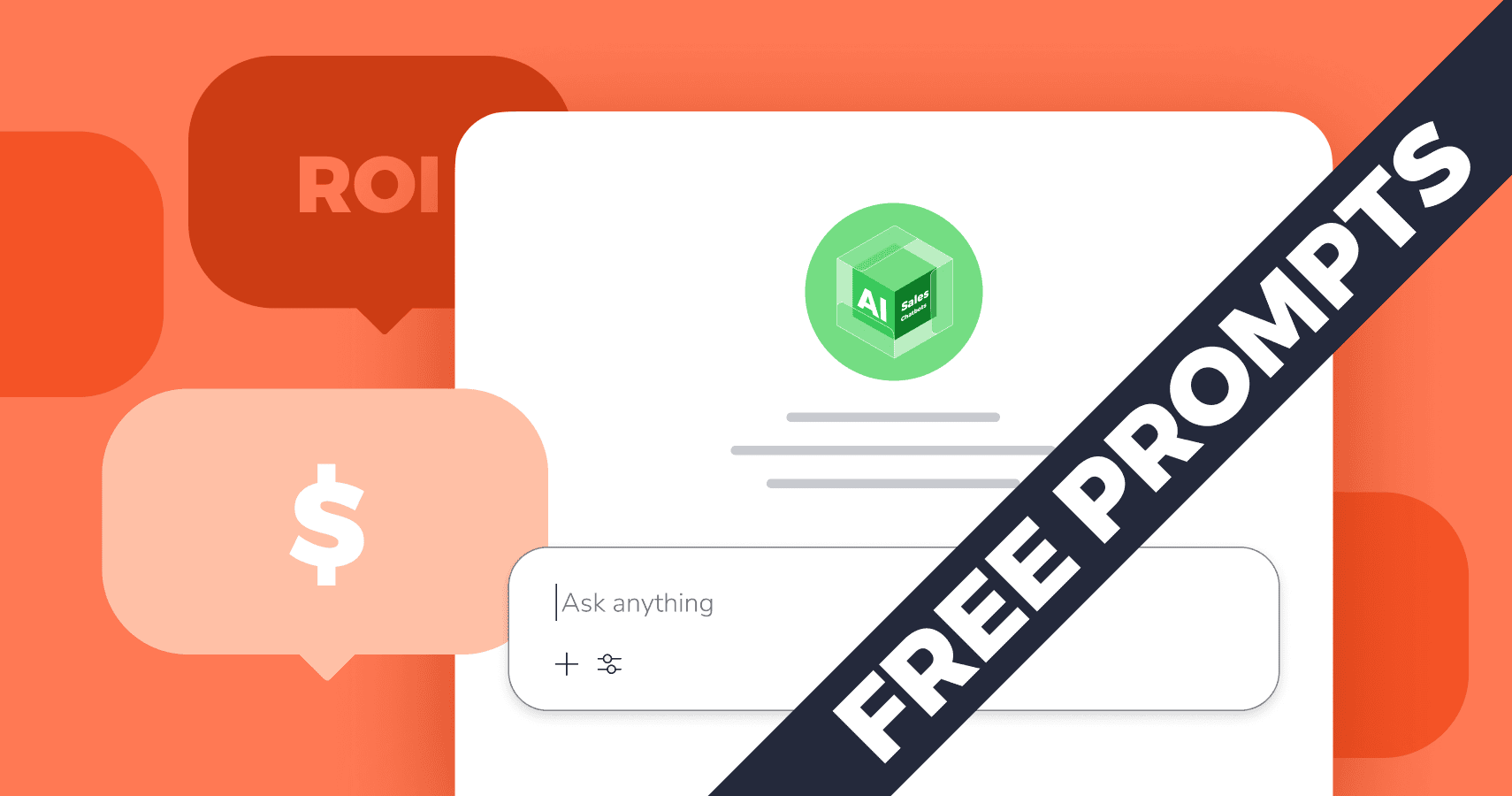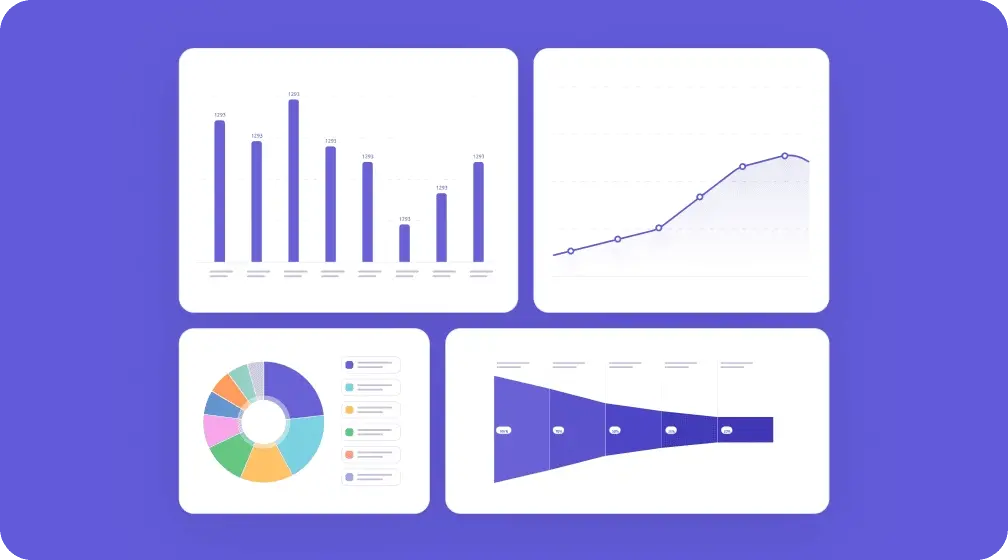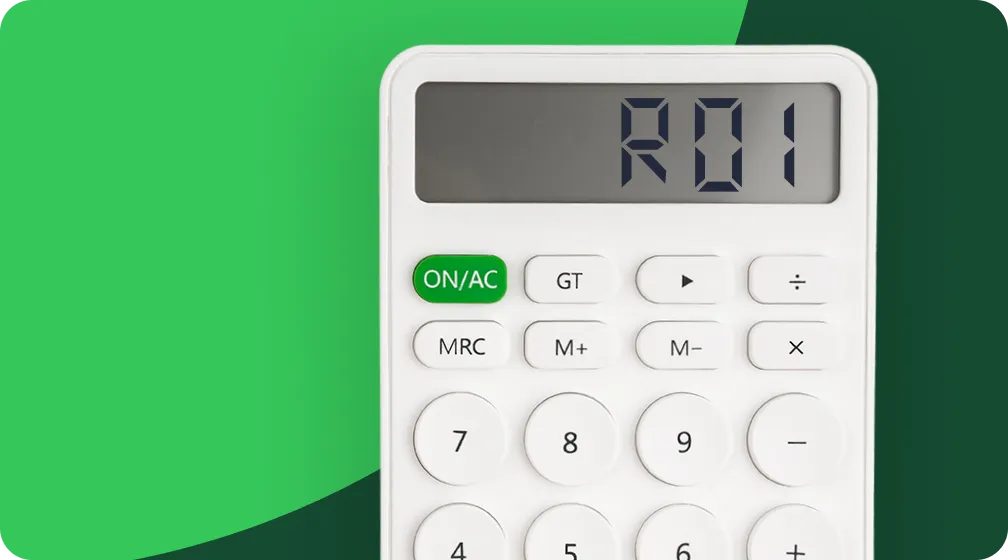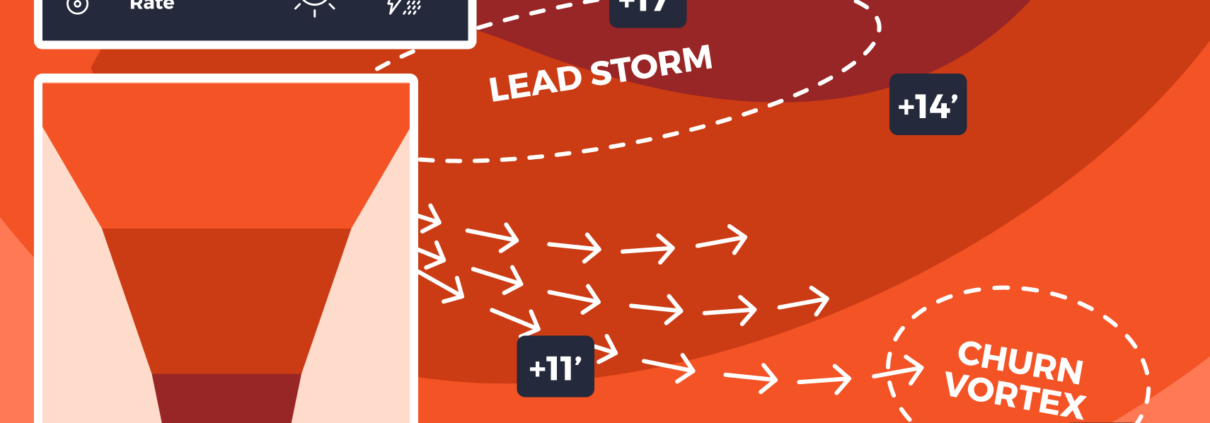The Beginner’s Guide to Sales Forecasting (For Sales Directors & Managers)
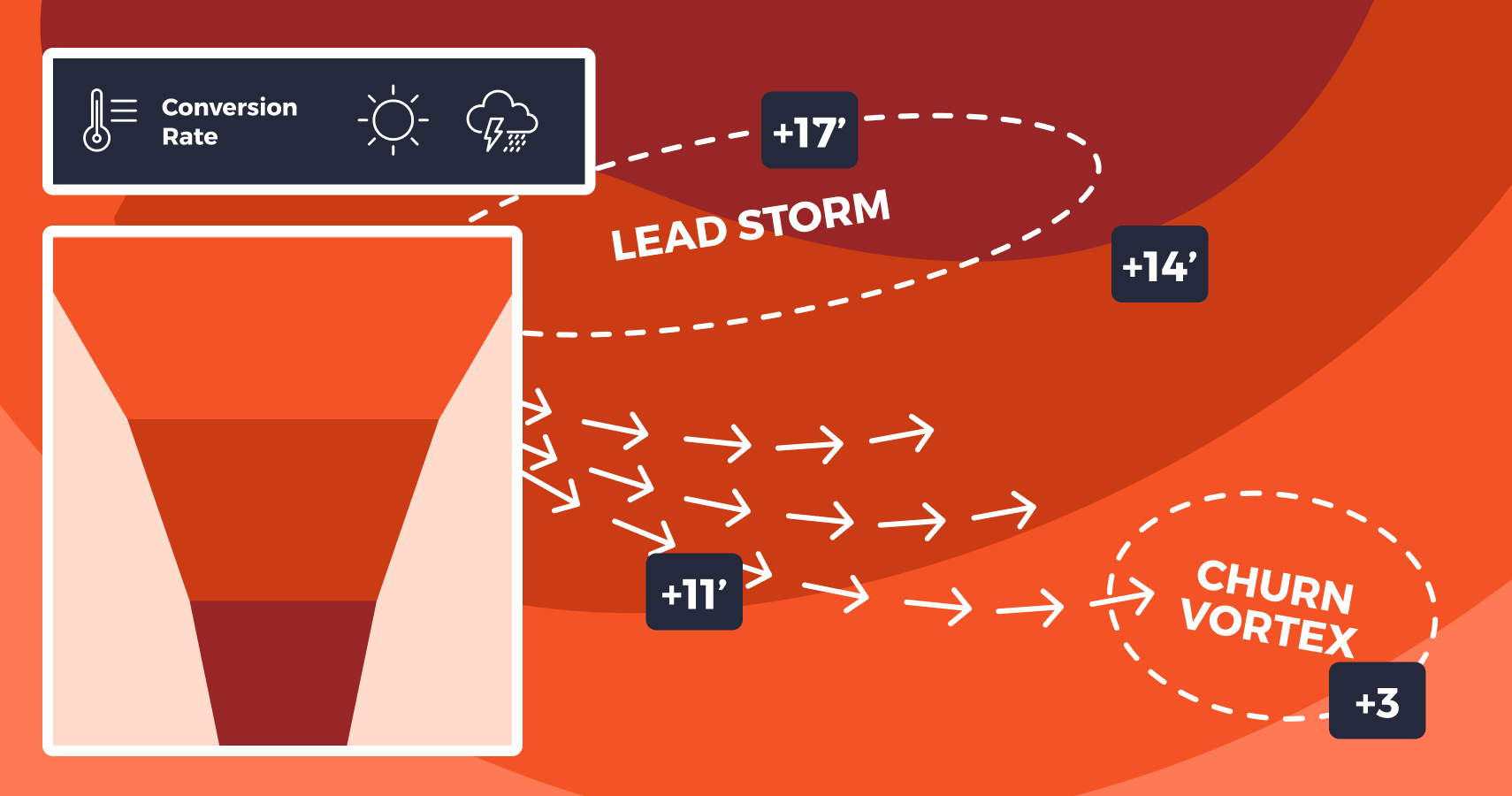
Table of Contents:
- How to forecast sales? 5 types of sales forecasting methods
- 1. Intuitive forecasting
- 2. Qualification frameworks
- 3. Length of sales cycle
- 4. Opportunity stages forecasting
- 5. Pipeline-based forecasting
- Implementing your first sales forecasting process – what you need to get started
- Sales performance management becomes easier with the right sales forecasting method
If you’ve ever stared at your pipeline and thought, “I have no idea what’s actually going to close this quarter,” you’re not alone. Sales forecasting can feel like something reserved for bigger teams with data scientists, expensive tools, and time to spare. But, you know what? With the right process (and a bit of consistency), sales forecast accuracy is well within reach.
Whether you’re a new manager or a sales director still relying on spreadsheets and intuition, getting serious about forecasting can transform your sales performance management. It helps you see what’s coming, adjust faster, and build a team that hits targets with fewer surprises.
In this guide, we’ll walk through practical sales forecasting methods that actually work – especially for managers and directors who need structure, not spreadsheets full of guesswork. You’ll also get tips to help make forecasting a regular, reliable part of your team’s workflow.
How to forecast sales? 5 types of sales forecasting methods
1. Intuitive forecasting
At first, building sales forecasts on “gut feeling” might seem risky, or even sound a little outdated. But intuitive forecasting is a legitimate method. In some cases, it’s the smartest move.
It circles around your and your team’s real-world experience. What patterns have they noticed while working on deals or speaking to leads? What kinds of deals usually end with a sale, and which ones stall? Are there timing or behavior cues that signal a sales win or a loss?
It’s not for every situation, but when data is thin or deals are complex, intuition can be a surprisingly valuable tool.
A quick example:
A cybersecurity startup is entering the German market. The product is innovative, but the sales director has 10 years of experience in the DACH region. They estimate they’ll close 3 mid-size clients in the next quarter based on ongoing discussions and industry cycles, despite no past sales in that geography just yet.
Use this if:
- You’re a new business and don’t have much data to lean on yet. This might work especially well if you’re in an emerging space, where you can’t look up numbers for competitors.
- You’re in a niche where your team knows the market well. This also includes situations, in which sales rely on close, trust-based relationships with clients.
Skip it if:
- You have a solid, established pipeline. As we say at Livespace, if you can measure something, you can also improve it. Your sales forecast accuracy will always be higher when you can use historical data over observations only.
- Your sales reps tend to be overly optimistic, pessimistic, or inconsistent in their opinions. Bias can skew the whole picture!
2. Qualification frameworks
Qualification frameworks help you take the emotion (and the wishful thinking) out of forecasting. Instead of betting on gut feel, you assign a score to each deal based on objective criteria. That score gives you a clearer sense of which deals are real contenders and which are just wasting space on your forecast.
What is it?
Rather than relying purely on pipeline stage or deal age, qualification-based forecasting scores deals using structured criteria. For example:
- Referral deals might score a 7.9 because they historically close more often.
- Paid search leads (like from Adwords) might score a 5.1, reflecting lower close rates.
One popular methodology is MEDDIC – a framework that’s been around since the 90s and still hits the mark today. It stands for:
- Metrics (What’s the measurable value?)
- Economic buyer (Who signs the check?)
- Decision criteria (How are they choosing?)
- Decision process (How do they buy?)
- Identify pain (What problem are we solving?)
- Champion (Who’s fighting for us inside?)
You score each deal on how well it ticks these boxes. Higher-scoring deals = higher likelihood to close.
A quick example:
Let’s say you’re a sales leader at a B2B software company selling workflow automation tools.
You’ve got Deal A and Deal B, both sitting in the “Proposal” stage. But a quick MEDDIC check shows they’re not equal:
- Deal A was referred, has a clear champion, an involved economic buyer, defined criteria, and a mapped-out decision process. Only the ROI metrics are still in progress. It scores 8.7 out of 10.
- Deal B came from a cold email. No champion, no buyer identified, unclear criteria, and no real decision process. It scores a 4.2.
See? Same stage – very different reality. Thanks to MEDDIC scoring, you know Deal A deserves confidence, while Deal B gets watched (but not counted on).
Use this if:
- You want emotion-free forecasting. Scoring forces everyone to look at actual deal quality – not just vibes.
- You’ve adopted a sales methodology (like MEDDIC, BANT, or SPIN). If your team is trained on a consistent framework, you can turn it into a scoring model with forecasting value.
- You’ve got data on what matters. Lead source, buying behavior, stakeholder roles – if you track it, you can factor it into your scoring.
- You manage fewer, high-value deals. This method is great when every deal matters and you need to assess them one by one, especially in enterprise sales.
Skip it if:
- You don’t have a shared qualification process. Without a standard framework, deal scores become inconsistent, and worse, meaningless.
- Your team isn’t trained or aligned. If reps aren’t using the same yardstick, scores will vary wildly, and forecasting accuracy goes out the window.
- You’re in a high-volume, low-touch environment. For fast-moving deals with minimal interaction, scoring frameworks can be overkill.
- You’re not collecting the right data. No data = no scoring. Guesswork disguised as science is still just guesswork.
3. Length of sales cycle
This method focuses entirely on how long deals actually take to close. It helps you get a clearer idea of when a deal is likely to close. To do this, you add up the total number of days it took to close all your recent deals, then divide that by the number of deals to find your average sales cycle.
A quick example:
Imagine you’ve recently closed five deals that took 48, 52, 50, 45, and 55 days respectively. The total comes to 250 days. Dividing that by five gives you an average sales cycle of 50 days, so you know it’s about a month and a half.
With this average in hand, you can better estimate when current deals might close. So, if a salesperson reaches the proposal stage after three weeks, it’s helpful to remember that your typical sales cycle is around six to seven weeks. That means the deal might still need more time before it turns into a win, helping you set more realistic expectations.
Use this if:
- You have consistent historical sales data from enough recently closed deals to calculate a reliable average sales cycle.
- Your sales cycles tend to follow a predictable timeline, making it easier to forecast based on how long deals usually take.
- You want to improve the accuracy of your forecast timing. Not just whether a deal will close, but when it’s likely to happen.
Skip it if:
- Your sales cycle is unpredictable. Some deals close super fast while others drag on for months. An average won’t give you a clear picture and might actually lead you astray.
- You have little data. For example, you’re a new business or going through internal changes that can impact the credibility of the information. Without solid past numbers, this method won’t be reliable.
- Your deals are usually complex or require a lot of custom actions. For example, there might be external factors like contracts getting stuck in legal reviews or multi-step approvals that affect timing. This could make it hard to create a benchmark.
4. Opportunity stages forecasting
If you’ve got a defined sales process and some solid deal history under your belt, opportunity stage forecasting is the easiest way to start predicting revenue without hiring a data scientist or staring at spreadsheets until your eyes bleed.
What is it?
Opportunity stages forecasting lets you estimate the likelihood of closing a deal based on where it sits in your pipeline. Most teams break the pipeline into common stages like:
- Prospecting/incoming
- Qualified
- Quote/proposal
- Closing
- Won or lost
At each stage, you assign a probability of winning the deal. Multiply that probability by the deal value, and voilà – you’ve got a forecast.
A quick example
Let’s say you’re at a B2B SaaS company. You’ve got a deal in the “Qualified” stage worth $20,000. Your historical close rate at that stage is 25%. That gives you $5,000 in forecasted revenue from that deal. Multiply that across your whole pipeline and you’ve got a quick, birds-eye view of what might be coming in.
Just don’t forget: the accuracy here is only as good as your data hygiene and process discipline.
Use this if:
- Your sales process is clearly defined. Everyone on the team knows what “Qualified” or “Proposal” actually means, and uses those terms consistently.
- You’ve got historical data. If you know what typically happens at each stage, you can make informed guesses about future deals.
- You’re dealing with volume. This approach shines when you’ve got a lot of deals in play. Big sample size = more reliable forecasts.
- You need to get forecasting off the ground – fast. This method is simple, straightforward, and doesn’t require a PhD in statistics.
Skip it if:
- You’re flying blind. No historical close rates = shaky forecasts. If your pipeline is new or constantly changing, this method might mislead more than help.
- Your deals are all over the place. High variability in deal size, length, or buyer behavior makes stage-based forecasts feel like guesswork.
- You’re managing big, complex, strategic deals. A six-figure deal with ten stakeholders and a two-year close time needs more nuance than this model provides.
- Your reps treat CRM updates like dentist appointments. If stages aren’t consistently updated, your forecast is built on bad data, and bad data = bad decisions.
5. Pipeline-based forecasting
This is, perhaps, the best-known sales forecasting methodology for B2Bs. As the name already hints, it’s where you use data from the deals that are already in your sales pipeline. To estimate how much revenue you’re likely to bring in over a specific period, you:
- analyze the status of all of your sales opportunities,
- estimate their value,
- assess the probability of closing each opportunity.
Naturally, to know this, you’d require access to data (ideally, in a structured format like in a CRM).
A quick example:
Let’s step into the shoes of a software consultancy, which uses a CRM to manage their sales pipeline. You want to know how many deals in the “Negotiation” stage have a chance of closing within 30 days. You look at past closed deals, how long their sales cycles lasted, and what their deal size was. Based on your findings, you can create an estimate for companies that are similar in profile.
Use this if:
-
- You already have a structured sales funnel. This means that you would have clear stages, like qualified lead → proposal → negotiation → closed-won.
- You have at least some historical win-rate data. This gives you what I would call “data-driven confidence”. Namely, you don’t use a mix of your own and external data, but rely closely on what has already worked for your target clients. This means the accuracy of your forecasts can be higher.
- Your primary goal is to create a near-term revenue. Deals in the pipeline are typically expected to close within a known timeframe, like the current month or quarter. For this reason, the forecast gives you a near-term view of what revenue might come in soon.
Skip this if:
-
- Your sales cycles are long and unpredictable. If you can’t trust the data, using a pipeline-based sales forecasting method might not be the best choice.
- You have few active deals. Few deals means you don’t have a big sample to rely on – so it’s not going to come with a high probability.
- Your pipeline is immature. By “immature” I mean that it’s inconsistent or not segmented into stages yet.
Implementing your first sales forecasting process – what you need to get started
1. Choose a simple forecasting method that fits your sales process maturity
As you can already tell from the methods I’ve shared above, the main criteria when choosing an approach is how mature your sales process is. When you’re just starting out and haven’t done much forecasting before, it’s best to keep things simple because those methods are easier to manage and understand. The good news here is that, even if you choose a beginner forecasting method at first, it doesn’t mean you’re stuck with it forever.
As your team grows and you get more data, you can start mixing different methods, like combining intuitive and pipeline analysis, to create forecasts that feel more accurate and nuanced.
2. Decide on the data to track
Forecasting without clear data is like trying to hit a quota with your eyes closed. Possible, but unlikely (and painful). If you want a forecast that’s worth more than a wild guess, you’ll need to track the right mix of numbers and insights.
That means both quantitative data (hard numbers) and qualitative inputs (things like trends, feedback, and context).
Here’s what that actually looks like:
| Category | What to track | Why it matters |
| Historical sales data | Revenue by period (monthly, quarterly, yearly), Units sold (sales by region or segment), Seasonal trends (repeat customer patterns) | Establishes benchmarks and identifies patterns for future forecasting. |
| Sales pipeline data | Number of active deals, stage of each opportunity, deal size, expected close date, probability of closing | Provides a real-time picture of potential revenue and helps prioritize pipeline. |
| Lead & customer data | Lead source (e.g., referral, ad), lead score or quality, industry, company size, region, buyer persona behavior, segment conversion rates | Improves segmentation and helps forecast based on buyer behavior and quality. |
| Product/service data | Pricing, discounts or promotions, product availability, upsell/cross-sell activity | Ensures revenue assumptions are based on accurate, real-world variables. |
| Sales rep performance | Close rates per rep, average deal size, sales cycle length, quota attainment | Allows adjustment of forecasts based on team or individual performance trends. |
| Market & economic conditions | Industry shifts, competitor activity, buyer demand trends, economic indicators (e.g., inflation, interest rates) | Adds external context that impacts buyer behavior and sales velocity. |
| Forecast assumptions & goals | Strategic growth targets, campaigns or launches, team changes (e.g., new hires), operational constraints | Aligns the forecast with future plans, business goals, and known risks. |
Here’s a tip: Decide what data actually matters for your sales process, get your team aligned on tracking it, and make sure your tools (CRM, reports, dashboards) are pulling from clean, consistent inputs.
3. Use a tool that lets you track sales
Let’s face it, even experienced sales leaders sometimes default to two forecasting methods:
- the gut feeling
- the spreadsheet shuffle
But surely, this isn’t the best way to forecast sales. If you’re relying solely on instinct, you’re not learning anything repeatable about your customer segments or win patterns. And if you’re living in Excel, you’re manually crunching data that could (and should) be automated, which means more room for error, missed insights, and less time actually coaching your team.
How can you fix it? Use a CRM like Livespace – and use it right.
A modern CRM isn’t just a digital Rolodex. It should be your single source of truth for forecasting. But that only works if the whole team is aligned and disciplined.
Here’s what you need to make it work:
- Define the data points you’ll track. Think: close dates, deal amounts, pipeline stage, lead source – the usual suspects. But make sure everyone knows what matters.
- Get your team to update consistently. Forecasting only works if the data is current and clean. That means reps must treat the CRM like it actually matters (because it does).
- Reinforce habits through process and accountability. CRM discipline doesn’t just happen. Set expectations, give reminders, and use your 1:1s and team meetings to reinforce what “good data” looks like.
Over time, you’ll start to see more than just deal values. You’ll see trends. Patterns. Personas. And those insights will fuel more accurate forecasts – and smarter sales plays.
4. Review, refine, repeat
Look, since you’re new to forecasting, your early forecasts will probably be wrong. Not wildly wrong, but wrong enough to feel a little humbling. That’s not failure; that’s step one.
Forecasting is a process, not a prediction ritual. The only way to get better is to track, learn, and adjust, every single month.
Here are a few tips to build the feedback loop:
- Do a monthly forecast vs. actual review. Sit down and compare what the team forecasted with what actually closed. Ask: Where were we off? By how much? And why?
- Adjust close rates and timelines based on reality. If your team assumed deals in the “Proposal” stage would close in 30 days, but they consistently take 60, update your assumptions. Same goes for stage-based win rates. Don’t lock them in. Let them change with the business.
- Build accuracy over time. Think of forecasting like compound interest. Every month you refine your model, your accuracy improves (and confidence in the numbers grows).
Eventually, your forecast won’t just be a guess; it’ll be a tool your leadership team can count on. Especially, if you use a CRM like Livespace that helps accurately predict your future sales.
5. Coach the team to think in terms of forecasting
So you’re ready to bring forecasting into your team’s workflow. Good call. But before you dive into tools or spreadsheets, here’s the real starting point – the mindset. Forecasting isn’t just about numbers. It’s also about habits, and it starts with how your team thinks.
If your reps treat forecasting like a quarterly chore, it’ll always be inaccurate, even if they use the right tools. To get forecasting right, it needs to become part of how your team talks, plans, and sells. That starts with the manager (yes, that’s you).
Make forecasting a natural part of these key moments, here’s how:
- Pipeline reviews. Don’t just ask “What’s in the pipeline?” Ask: “What’s likely to close, and why?” This nudges reps to qualify their deals and think about probabilities, not just stages.
- One-on-ones with reps. Use deal reviews to talk through forecast confidence. Are they basing their numbers on historical trends? Deal quality? Gut feel? Get them thinking like mini sales analysts – not just deal chasers.
- Team goals and incentives. Consider tying team targets or incentives not just to revenue booked, but to sales forecast accuracy. Reps who learn to call their shots well are worth their weight in the pipeline.
Forecasting is a skill, and like any skill, it gets better with reps (pun intended). Early on, accuracy won’t be perfect. That’s fine. What matters is consistency. Build the muscle now, and the insights will follow.
Sales performance management becomes easier with the right sales forecasting method
Some businesses do get by for a while without much effort, and have a steady influx of leads. Especially, if they’re in a low-competition niche or riding the wave of a strong economy. But in sales, we all know things can shift fast. That’s why even the “luckiest” teams need to future-proof their strategy. Sales forecasting isn’t just a “nice to have”, it’s a must if you want to hit your targets, plan with confidence, and build trust with leadership.
The good news? It’s not nearly as complicated as it might seem. The basics are easy to grasp, and some forecasting methods let you start even if you’ve never documented or analyzed your sales process.
Also, tools like Livespace make it even easier to start by pulling forecasts directly from your pipeline. You won’t need to jump between spreadsheets or engage in manual calculations. In my experience, the biggest hurdle isn’t the method; it’s simply getting started.
In my experience, the best solution is to choose a forecasting approach that fits where your team is today, and build from there. You’ll be surprised how quickly you start seeing the benefits.
And if you’d like to see where a solid sales forecasting process can get you with the right CRM tool, take a look at our ROI calculator – or schedule a demo.
Other posts
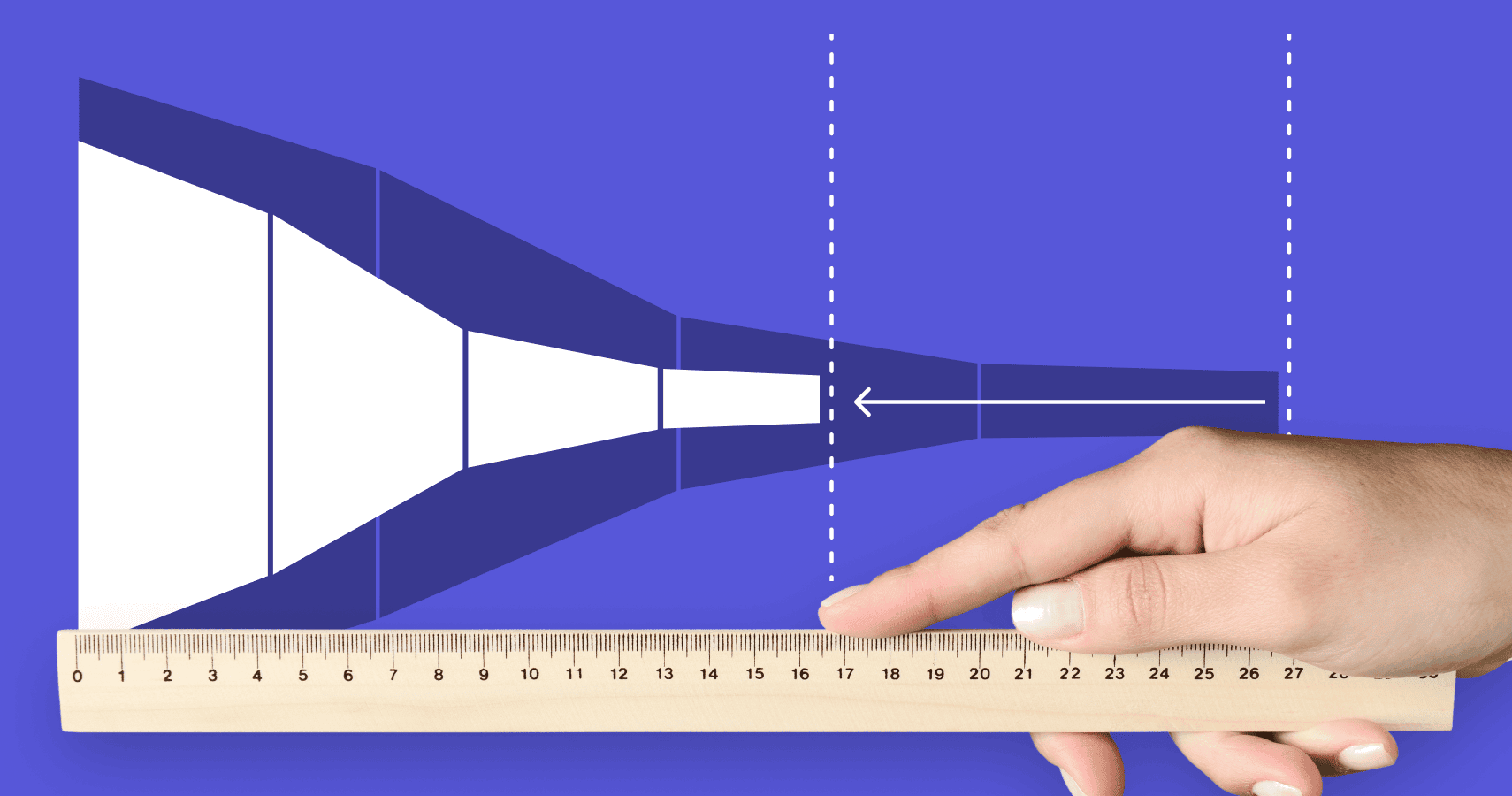
How to shorten the sales cycle in 9 easy steps

CRM reporting: The beginner’s guide for sales managers
